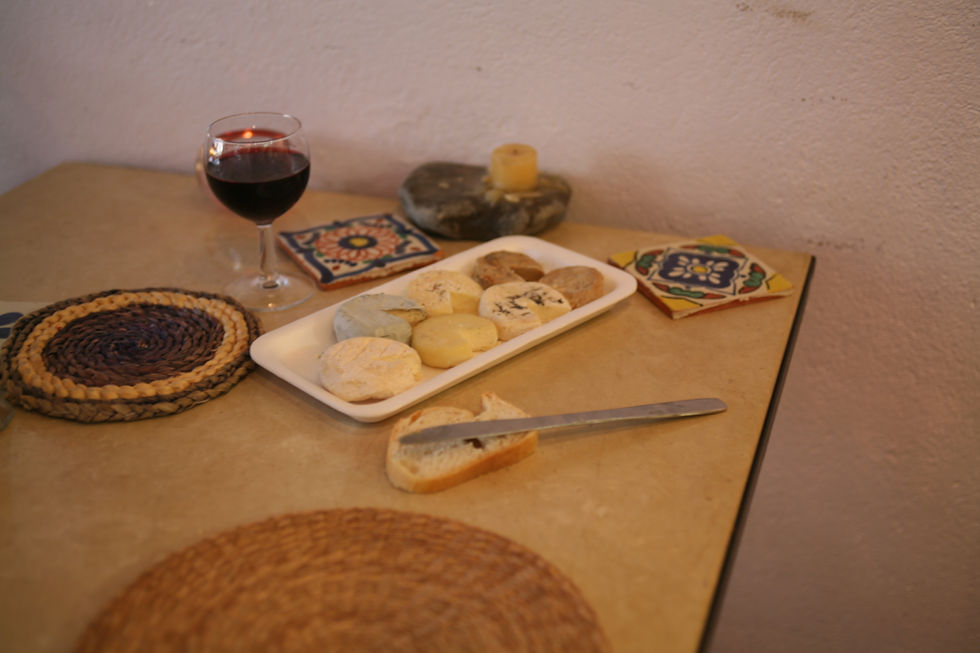(32) Oscypek, traditional Polish bijoux.
- C Demeyer
- Mar 13, 2022
- 3 min read
In these days of clash of philosophy (repression and conquest against free will and democraty), I would like to applaud the Polish people for their generosity and big hearts. This seems to have been true since 1770 at least, at least seen from my French perspective.
Therefore, I would like to talk about a wonderful traditional Cheese from the south of the country.

Just a nice view (you'll never know where)
I will present the fromage following my well-established system, and I hope that you like it; please remember to visit the website for more discoveries.
History:
The first surviving written record of cheese production in the area dates from 1416 when David Woloch of the village of Ochotnica, in Gorce, was granted the right to make cheese commercially by a charter. Then in 1748 and then in 1773, the rights to make cheese in the local wooden huts were precisely described. More details were written about the cheese production of the area in 1830 and 1858. The cheese at that stage was pretty much defined and the people of the area kept making it, even if barely under the harsh communist rule.
It was granted PDO status in 2008, having survived difficult times it is still made in the area but in small quantity. Due to exacting standards requiring specific know-how and long hours of work, many copies exist with less demanding procedures, just buy the right product.
Area of production
The area of production of the cheese is located south of the country of Poland at the border with the Czech Republic and principally the Slovak Republic. It is a small area mainly in the south of the province of Lesser Poland with the south of the Silesian province included up to the Czech Republic border; it is composed of 14 municipalities. It is a mountainous area at the top northern part of the Carpathian mountain range, the eastern part of what can be considered the eastern Alps. the area is composed of forest and high pasture lands with the lower parts made up of upland meadows with specific abundant flora. It is a good area for animal tending during the summer months, but this is high on manual labour.
Method of production
Whole raw milk of Polish Mountain Sheep breed is mainly used to make this cheese, and when mixed with Polish Red Cow breed’s milk it has to be at least 60% of the total. The evening milk is kept to mature at room temperature and is mixed with the newly obtained milk in the morning and kept in a warm atmosphere, usually near the hut fire. Traditional natural animal rennet is used for coagulation in the vat and stirring occurs during this time. After a moment of rest the curd settle on the bottom of the vat, and then half of the whey is removed. The rest of the cheese is then pressed to extract as much of the remaining whey as possible. The dry curd is then hand-grinded and then formed into a ball which is put into a container filled with whey. The ball is then hand-pressed and pierced with a skewer, then it is shaped along the skewer until the desired shape is formed. The shape is then smoothed by hand and the cheese is placed in cold water. It is then salted by immersion in a bath of brine for up to 24 hours and then dried out. The last part of the process is the smoking of the cheese which is done using cold smoke from hardwood and this is done for 3 to 7 days. Only the traditional product is well made and have the right to be called “Oscypek”.
Presentation, taste, and flavour
The look of this cheese is special, either it is like two cones joined together, either it is like a spindle. Being smoked the cheese is more or less deep yellow coloured on the outside with a whitish inside and a firm texture. The aroma is a definite smoky scent with a touch of dairy and a woody character. The taste is strong on the outside due to the smoke having impregnated the cheese, but the character of the cheese is delicate with flavours of the grass and wild flora of the area. The aftertaste is complex with nutty flavours and a touch of acidity, you can taste the quality.
Safe keeping
to be consumed within the week when cut, wrap tightly in cheese paper or cling film and keep in refrigerator.
And remember, give life to your taste buds, and above all, enjoy real cheese.



Comments